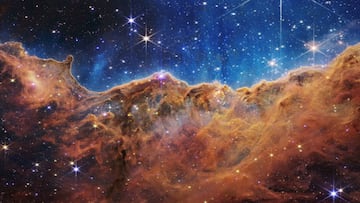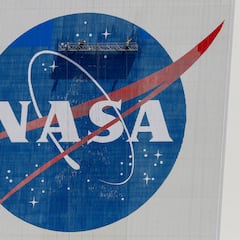How far from Earth is NASA’s James Webb Space Telescope? Is it moving?
In July, NASA released the first images sent back by the $10bn JWST, which is able to look deeper into space than any other telescope.


The James Webb Space Telescope (JWST), the largest and most powerful space-based telescope ever built, is orbiting the Sun at a distance of around one million miles from the Earth.
Telescope to move with Earth and Sun from Lagrange point
A collaboration between NASA, the European Space Agency (ESA) and the Canadian Space Agency (CSA), the $10 billion JWST is able to look further into the universe than any previous telescope. Launched on Christmas Day 2021 from French Guaiana, it took a month to travel to its destination - a spot in our solar system known as the Second Lagrange Point, or L2. When positioned at a Lagrange point, an object is able to harness the gravitational pull of two large masses - in this case, the Sun and the Earth - to move with them.
The JWST will circle L2 as it orbits the Sun, remaining in a position that allows its sunshield to block out light from the Sun, the Earth and the Moon. “L2 is ideal for astronomy because a spacecraft is close enough to readily communicate with Earth, can keep the Sun, Earth and Moon behind the spacecraft for solar power and (with appropriate shielding) provides a clear view of deep space for our telescopes,” NASA says.
Watch how the JWST orbits the Sun from L2:
First JWST images released in July
After reaching L2, the JWST embarked on a six-month ‘commissioning’ period in which its mirrors and sunshield were unfolded, its mirrors aligned, and other systems calibrated. The telescope then began sending back images of the universe, the first of which were released on 12 July.
“Today is a historic day,” US President Joe Biden said at a White House preview of the pictures on the eve of their publication. He added: “These images are going to remind the world that America can do big things. And they’ll remind the American people, especially our children, that there’s nothing beyond our capacity - nothing beyond our capacity.”
“We’re looking back more than 13 billion years”
Because we are only able to see something once its light has reached us, the JWST’s images of stars, constellations and galaxies located billions of light years away allow scientists a window into the cosmos as it was billions of years ago.
Related stories
For example, the initial pictures sent back included a deep field image of the galaxy cluster SMACS 0723, which we see as it appeared some 4.6 billion years ago. Taken by the JWST’s Near-Infrared Camera, the picture also captures some even more distant galaxies located behind SMACS 0723, whose combined mass acts as a gravitational lens, magnifying the light travelling from them. “We’re looking back more than 13 billion years,” NASA administrator Bill Nelson told a press conference.
Thomas Zurbuchen, the associate administrator of NASA’s Science Mission Directorate, has said the image “moved me to tears”. “It’s looking at the universe in a way you’ve never seen it, and looking deeper into the universe, all the way to within a few hundred million years of the Big Bang,” Dr Zurbuchen said.

